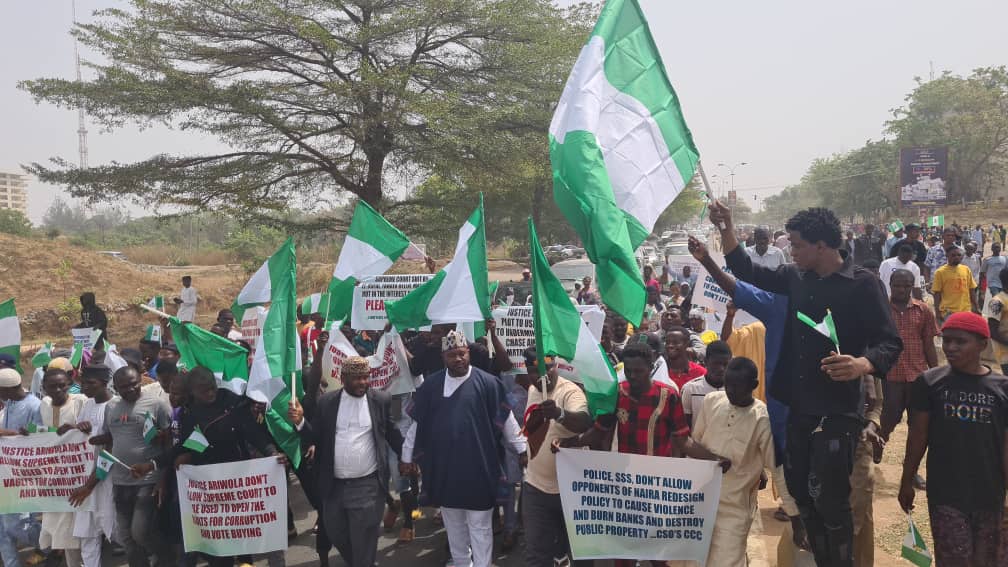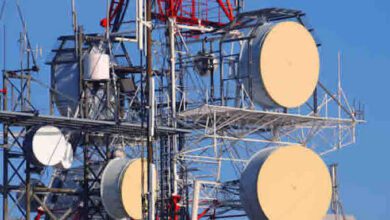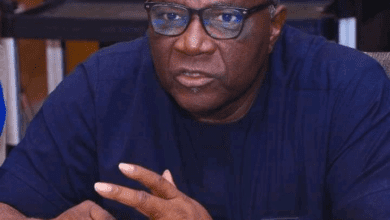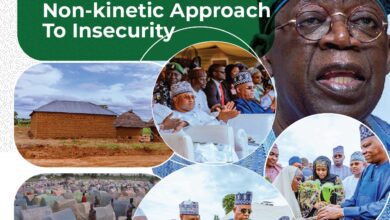Will Satellite Bridge Africa’s Internet Connectivity?

While terrestrial infrastructure and mobile networks appear to hold the aces in terms of broadband internet connectivity, satellite operators have raised the bar in taking services to many unserved and underserved communities across Africa.
By the last count, no fewer than 21 satellite operators dot the Europe, Middle East, and Africa (EMEA) zones providing services in that regard.
Satellite operators enable the development of the world’s remotest and poorest regions where the lack of terrestrial infrastructure and mobile networks prevent connectivity and all the socio-economic benefits that come with it.
But the cost of acquisition is still on the high side despite the beauty it provides.
Only a third of Africa, ‘s population has access to the internet and of the nearly 25 countries in the world that are poorly covered by internet connectivity,21 of them are in Africa. So, in order to attempt a bridge for connectivity, satellite operators think they could make a difference.
While voice communications remain high and on a steady rise, the internet is still a nightmare in parts of Africa which is yet to realize its full potential.
Nigeria, Egypt, and South Africa remain on top of the game as connectivity remains high both for the internet and voice communications.
In these countries, Average Revenue Per User (ARPU) remains encouraging for network providers. But satellite operators are itching to make a difference, especially in the remotest parts of the continent.
The EMEA Satellite Operators Association brings together all satellite operators active in providing communications solutions to the African continent.
For much of Africa, terrestrial and mobile networks are clustered around urban centres, leaving thousands of rural and remote citizens and businesses without voice, let alone data, and connectivity.
Records show that more than 100 million people in Africa don’t have access to communications.
In Nigeria alone, it is estimated that more than 20 million people are not covered by any kind of network despite efforts of the regulator, the Nigerian Communications Commission (NCC) to mitigate the situation through interventionist measures.
Yet a single satellite can provide ubiquitous communications over one-third of the earth’s surface. Today all of Africa is covered with satellite communications, operating mainly in C, Ku, and Ka frequency bands, delivering affordable, reliable, and robust services across the entire territory.
Through satellite services, the continent has immediate access to some of the world’s most advanced technologies – such as broadband connectivity and 3G communications which are taken for granted in developed countries. Some countries including Nigeria, Egypt, Ghana, and South Africa have 4G and 5G communications.
In order to provide essential services, satellite operators have delved into areas like education, telecommunications, agriculture, hospitality services, logistics, telemedicine among others since Satellite operators enable multiple applications and services that significantly improve the welfare of African citizens.
ESOA members provide tools that allow African countries to enhance their democratic processes and civil governance, plan and build new infrastructures, provide access to education, establish health and disease management processes, revitalise social and cultural life, and as a result, reduce the crippling disparities created by the Digital Divide.
EMEA Satellite Operators Association (SOA) says satellite communications is making a huge difference “in educating both teachers and students in schools and colleges, especially in remote and rural areas.”
It states that “with teaching levels still falling short of adequate standards, many African countries see large numbers of children emerging from school functionally illiterate. It is therefore essential to ensure both pre-service and in-service teachers are trained on the new curricula many African countries are using.”
Here eLearning through Satellite communications helps by making the process fast and cost-effective, ensuring at the same time high quality standards everywhere, even where terrestrial networks are not available.
ESOA metamorphosed into the Global Satellite Operators Association (GSOA) and expanded its membership from Europe, the Middle East, and Africa in 2021 thus bringing in operators in Asia and the Americas.
It also expanded its scope into major aspects of human endeavors thus signposting a new approach to satellite communications with emphasis on broadband connectivity in all the countries and territories where it has footprints.
But in the era of multi-stakeholder interest where space actors are dominated by private companies, the costs of satellite communications appear to be high thus creating exclusivity to operators in the regions.
In the face of disruptive technology empowered by some of the nonstate space actors like Elon Musk and his Starlink recently Licenced in Nigeria but with footprints in virtually all the continents in the world, its disruptive agenda has raised the bar for players, especially in Africa where there appears to be a weak link by private sector players.
There are worries about what is going on in the system and how it affects Nigeria whose Communications satellite christened NIGCOMSAT 1R launched in Xichang, China December 29, 2011, but grossly underutilized.
This puts the country in a dilemma as the 15-year lifespan of the satellite has just three years away and someone very knowledgeable about the situation asks rhetorically what becomes of Nigeria which has no backup satellites?
This player states clearly that ”there are several new space actors, most of which are private sector disruptors such as Starlink who have initiated a leapfrogging of otherwise well-established technology in the satellite industry”.
“So we are now experiencing multi-orbit operations in the Low Earth Orbit, (LEO), Medium Earth Orbit (MEO), and of course the traditional Geo-stationary orbit. How is this affecting the availability of satellite broadband? How is this affecting the affordability of satellite broadband and what is Nigeria doing about this?”
While admitting that Nigeria can in no way provide viable competition, especially in the face of no backup in case there’s a failure and downtime is experienced as happened in 2008 when Nigeria’s first satellite was deorbited as a result of solar array power failure these strong indications while
Its customers are wary hence their reluctance to sign on with it and instead look elsewhere for the services that they desire for their operations.
A few examples of how communication satellites have boosted connectivity suffice.
In Nigeria for instance satellite operator Inmarsat has worked with international partners including Mobile Alliance for Maternal Action (MAMA), Praekelt Foundation, SURE-P, and Dalberg Global Development Advisors to deliver maternal and child health services to 50 physically and technologically disconnected rural communities.
Healthcare worker examines patient and transmits data remotely to urban centre for monitoring.
Clinics in these remote areas used portable satellite Wi-Fi hubs to get access to online health information from MAMA in order to help improve maternal and child health outcomes.
MAMA is a public/private partnership specialising in delivering localised health information to new and expectant mothers via mobile phones. The project started in 2015 and to date, it has reached more than two million women, families, and caregivers across a range of low and middle-income countries.
Access to financial, banking, and money transfer services is a prerequisite for economic growth in Africa but the lack of reliable and affordable telecommunications prevents the ubiquitous roll-out of financial outlets.
Banks cannot count on traditional fixed or wireless telecommunication services which either are present with poor quality or are simply non-existent in remote regions in Africa. In these remote areas, satellite communications are enabling affordable, high-quality services in financial services.
In Kenya, Satellite companies have been working in partnership with banks to help deliver reliable access to banking services. In 2015 Inmarsat, working in partnership with the Equity Bank Group helped to deliver financial services to 200 sites across Kenya using portable terminals, including some of the most remote places in the region, and extend financial inclusion to the unbanked and unconnected. Local agents can also use this connectivity to offer other data-based services, which increases business opportunities both for them and the wider community.
Satellite technology played a key role in the last Burkinabe Presidential Election process. Together with Commission Electorale Nationale Independente (CENI) and a number of key partners, SES provided a satellite broadband solution that enabled secure digital transmission of the electoral results.
The main 368 electoral offices were equipped with satellite services and served as hubs for the collection and transmission of the votes from over 18,000 polling offices across the country to the central CENI centre in the capital, Ouagadougou.
Ghana is implementing an Instructional Leadership Programme for Headteachers in schools in Eastern Ghana.
The project will train Headteachers to become Instructional Leaders, first face-to-face, and then through a distance-learning program, made possible by satellite multicasting. The project aims to improve teaching practice through interactive, activity-based learning; to improve teachers’ subject knowledge; to create more equitable classroom environments; and to support the development of a more accountable monitoring system of teaching quality. The project is ongoing and will train 5.000 teachers in the next 2 years at a cost of 179€ per teacher per year.
In the Democratic Republic of Congo (DRC) Satellite operator Rascomstar has independently brought mobile telephony to remote villages in the DRC. Such villages often have populations of up to 20,000 people, no stable electricity supply, and no GSM coverage as the population density is too low to make commercial sense for mobile network operators.
The satellite operator therefore bears the cost of securing the installation of a tower, solar panels, BTS and GSM antennas, and satellite antennas to backhaul the traffic.
The result is an immediate social impact – calls can be made from the village to any fixed or mobile phone in the world. The first users are doctors, teachers, and local businessmen, with higher traffic than expected even though the average calls are less than 2 minutes long. Despite the lack of electricity, people are able to recharge their batteries through local vendors.






